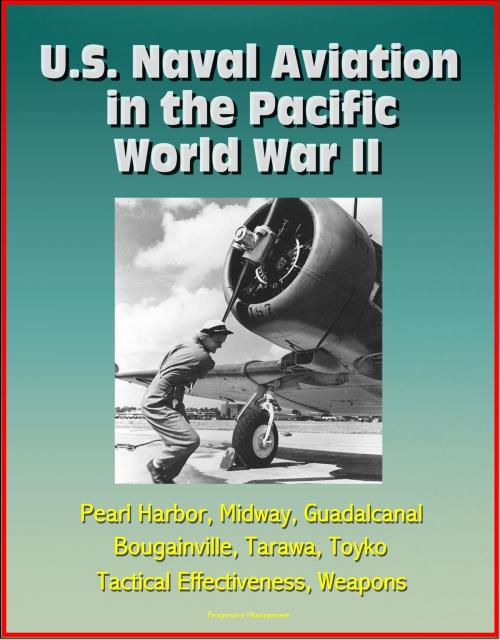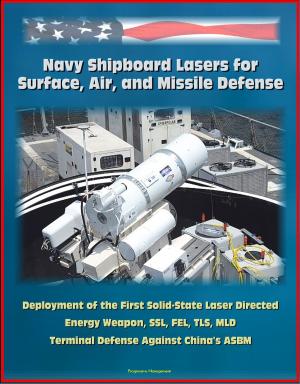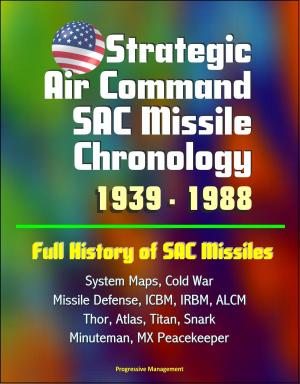U.S. Naval Aviation in the Pacific: World War II - Pearl Harbor, Midway, Guadalcanal, Bougainville, Tarawa, Toyko, Tactical Effectiveness, Weapons
Nonfiction, History, Military, World War II| Author: | Progressive Management | ISBN: | 9781301035106 |
| Publisher: | Progressive Management | Publication: | January 29, 2013 |
| Imprint: | Smashwords Edition | Language: | English |
| Author: | Progressive Management |
| ISBN: | 9781301035106 |
| Publisher: | Progressive Management |
| Publication: | January 29, 2013 |
| Imprint: | Smashwords Edition |
| Language: | English |
This important U.S. Navy history about naval aviation in the Pacific during World War II was published in 1947.
Contents * CHAPTER I * Mission and Organization of Naval Aviation * CHAPTER II * Components and Weapons of Naval Aviation * CHAPTER III * Special Aspects of the Air War * CHAPTER IV * The Japanese Offensive-Pearl Harbor to Midway * CHAPTER V * Offensive-Defensive—Guadalcanal to Bougainville * CHAPTER VI * The United States Offensive--Tarawa to Tokyo * CHAPTER VII * Tactical Effectiveness of Naval Aviation * CHAPTER VIII * Lessons Learned
The purpose of this review, which was prepared by officers on duty in the Operations Division, including Air Combat Intelligence officers with extensive service in the Pacific, is to analyze the relation between air and sea power. It is based upon the experience of naval aviation in the war against Japan as recorded in the files of the Navy Department. Reports of the United States Strategic Bombing: Survey have also been consulted and the chart of the progress of the war has been taken from one of them.
The danger inherent in any report confined to one aspect of the war is that it may mislead the reader into forgetting that the conflict was won by a combination of ground, naval, and air forces, each of which carried its share of the common burden. All operated within the framework of strategic plans, and it is the aim of this analysis to show how naval aviation fulfilled its part of those plans.
Since it is from the lessons of experience that plans for the future must be derived, the report is presented in the hope that it will prove of some value to those responsible for the future security of the United States.
This important U.S. Navy history about naval aviation in the Pacific during World War II was published in 1947.
Contents * CHAPTER I * Mission and Organization of Naval Aviation * CHAPTER II * Components and Weapons of Naval Aviation * CHAPTER III * Special Aspects of the Air War * CHAPTER IV * The Japanese Offensive-Pearl Harbor to Midway * CHAPTER V * Offensive-Defensive—Guadalcanal to Bougainville * CHAPTER VI * The United States Offensive--Tarawa to Tokyo * CHAPTER VII * Tactical Effectiveness of Naval Aviation * CHAPTER VIII * Lessons Learned
The purpose of this review, which was prepared by officers on duty in the Operations Division, including Air Combat Intelligence officers with extensive service in the Pacific, is to analyze the relation between air and sea power. It is based upon the experience of naval aviation in the war against Japan as recorded in the files of the Navy Department. Reports of the United States Strategic Bombing: Survey have also been consulted and the chart of the progress of the war has been taken from one of them.
The danger inherent in any report confined to one aspect of the war is that it may mislead the reader into forgetting that the conflict was won by a combination of ground, naval, and air forces, each of which carried its share of the common burden. All operated within the framework of strategic plans, and it is the aim of this analysis to show how naval aviation fulfilled its part of those plans.
Since it is from the lessons of experience that plans for the future must be derived, the report is presented in the hope that it will prove of some value to those responsible for the future security of the United States.















